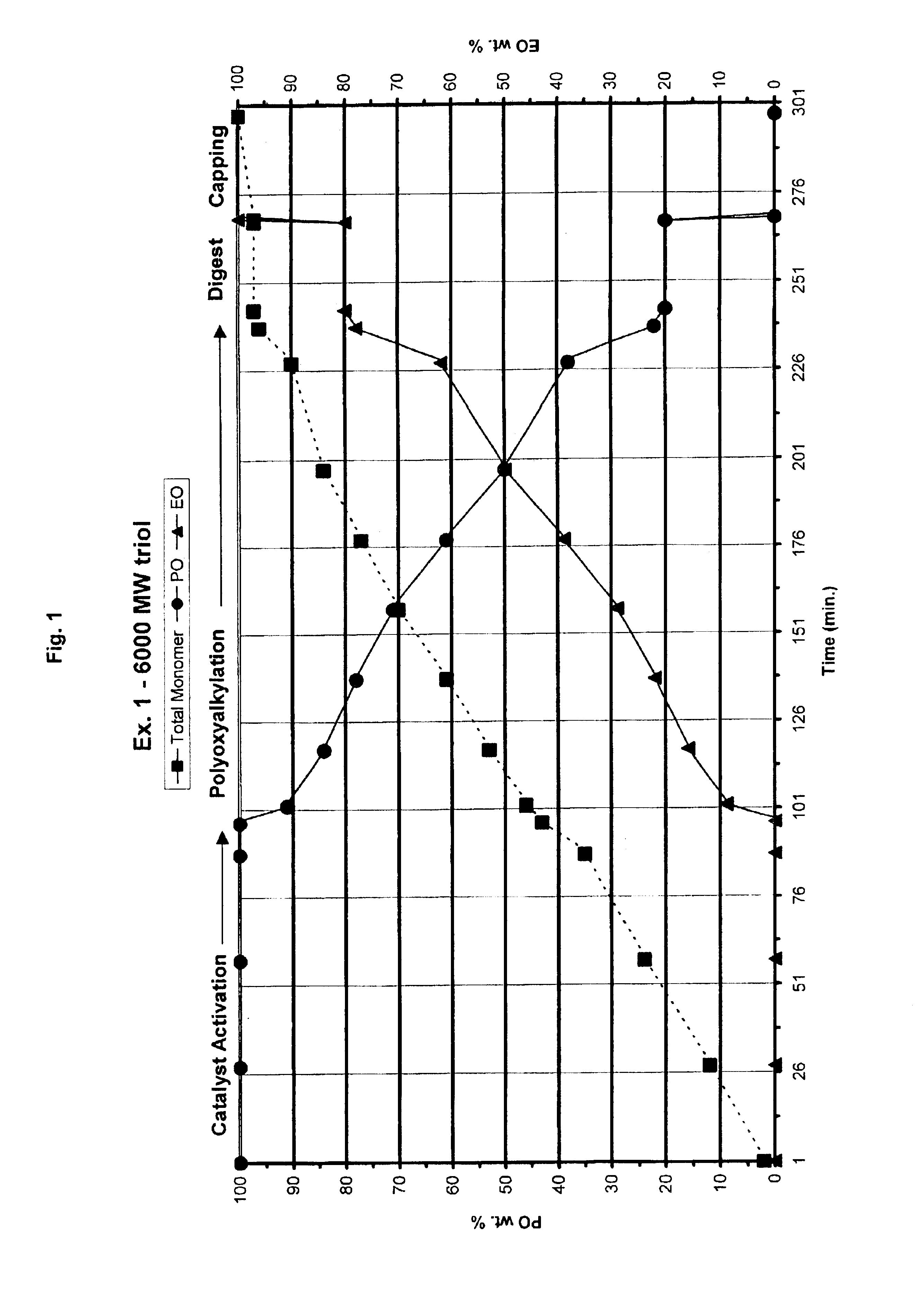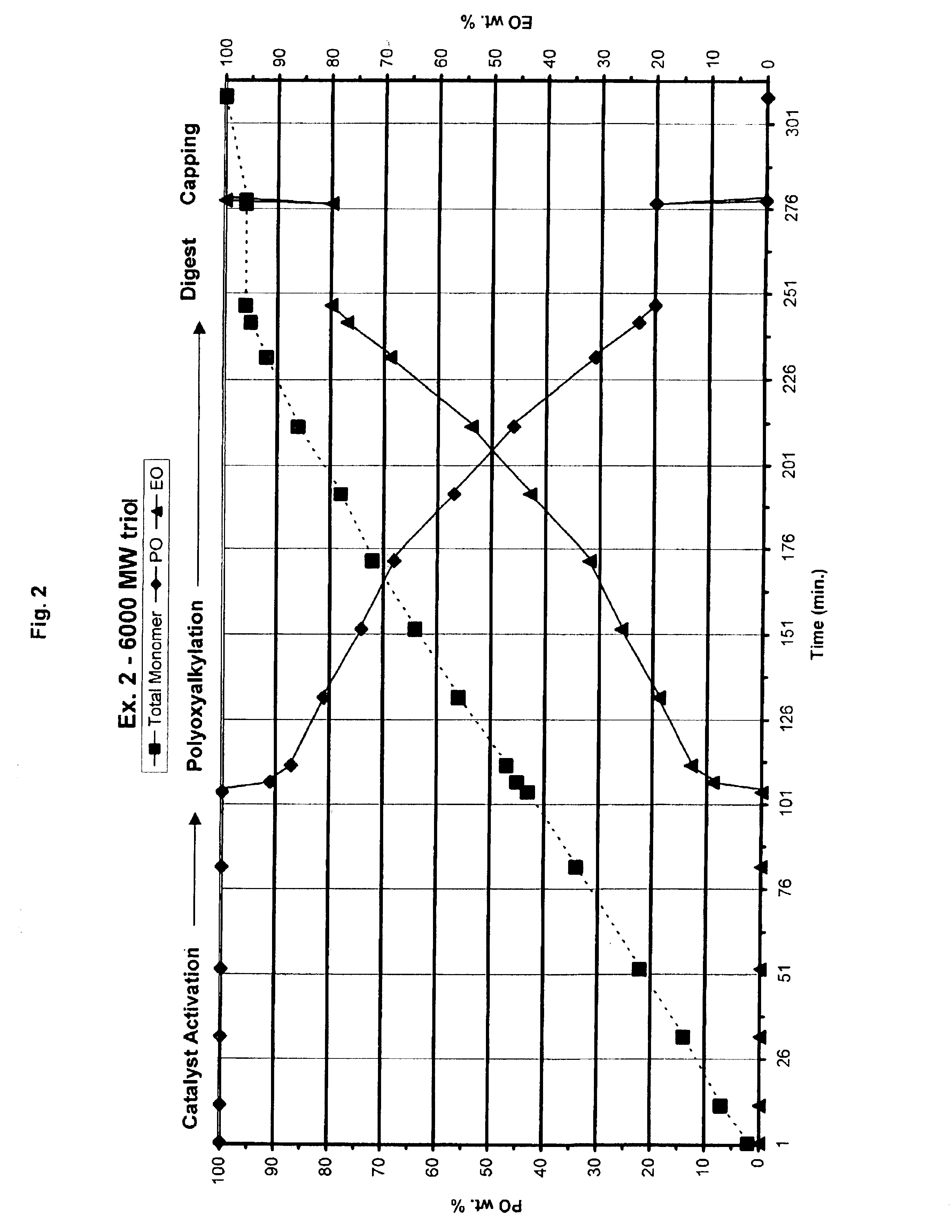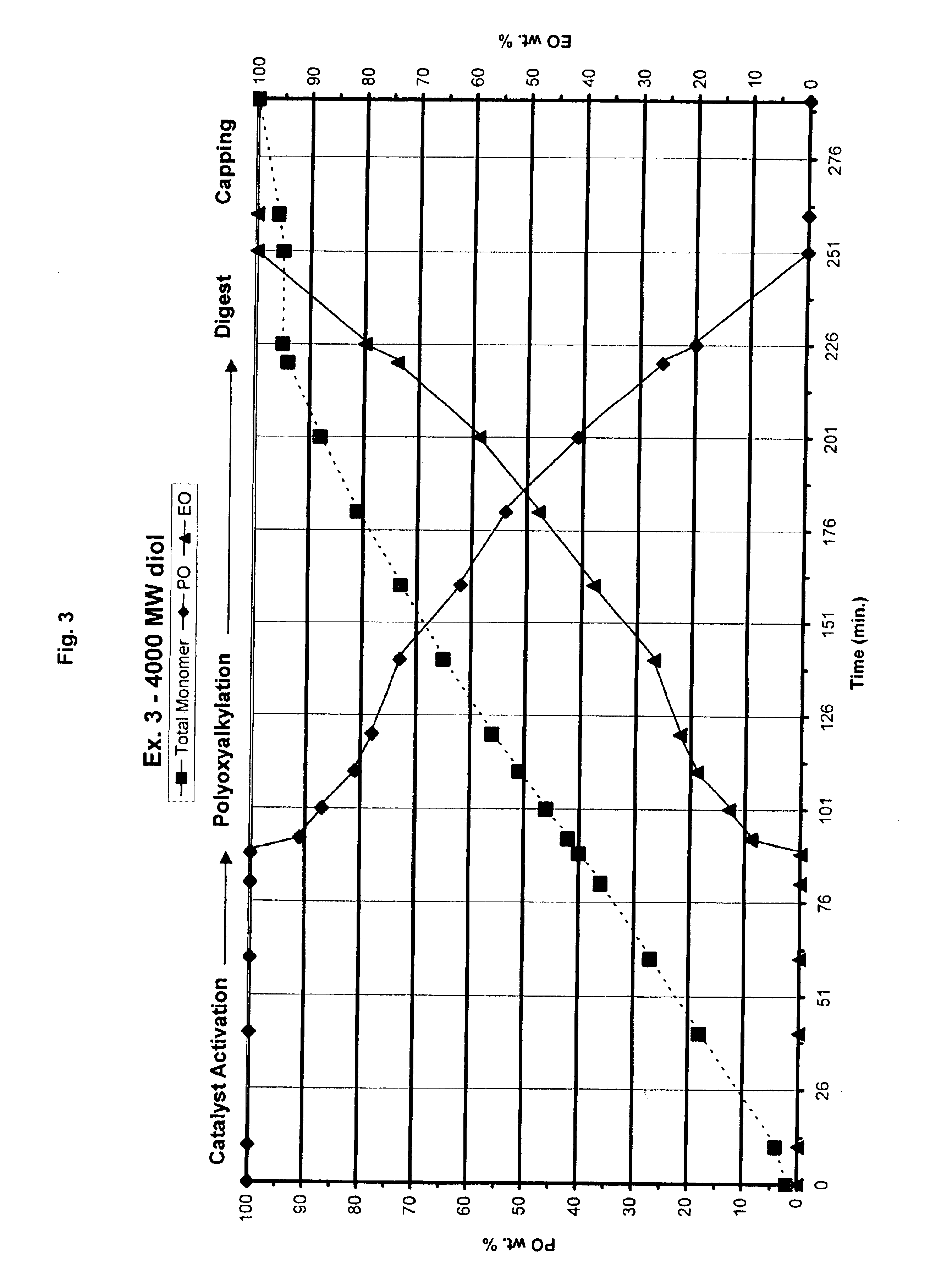Process for preparing double metal cyanide catalyzed polyols
a technology of double metal cyanide and polyol, which is applied in the field of polyols, can solve the problems of reducing the economic value of the product end
- Summary
- Abstract
- Description
- Claims
- Application Information
AI Technical Summary
Benefits of technology
Problems solved by technology
Method used
Image
Examples
example 1
Preparation of 6000 MW EO / PO (20 / 80 wt. Ratio) Triol which Contains High Primary Hydroxyl Functionality
[0031]A 1.5-liter reactor was charged with a propoxylated glycerin starter (hydroxyl number=240 mg KOH / g) starter (130.4 g), DMC catalyst prepared essentially by the method of U.S. Pat. No. 5,482,908 (0.0521 g, 50 ppm. based on the amount of finished polyol product). The mixture was stirred at 400 rpm and stripped under vacuum for 30 minutes at 130° C. to remove trace of water. After stripping, the reactor mixture was stirred at 700 rpm and heated at 130° C. Propylene oxide (19.5 g) was fed to the reactor to activate catalyst. Additional monomer mixture was not added until an accelerated pressure drop occurred in the reactor. That pressure drop is evidence that the catalyst has become activated. When the catalyst activation was verified, propylene oxide (678 g) and ethylene oxide (208 g) were added gradually over about 5 hours to control the profile of PO / EO composition in the poly...
example 2
Preparation of 6000 MW EO / PO (20 / 80 wt. Ratio) Triol which Contains High Primary Hydroxyl Functionality
[0033]The procedure of Example 1 was followed, except that a DMC catalyst containing NACl prepared essentially by the method of co-pending U.S. patent application Ser. No. 10 / 251,155, the entire contents of which are herein reference, was used with a digest time of 30 minutes. The profile of feed composition is shown in Table II. FIG. 2 illustrates the of the feed stream mixture during the process of Example 2.
[0034]
TABLE II6k triol, 20 / 80 EO / PO, no solventTotal MonomerTime(PO + EO) FeedFeed Composition(min.)(wt. %)PO %EO % 921000 2071000 40141000 60221000 903410001124310001154591912047671314056811916064742618072663220078574322086465424092316925095237725596208030 min digestion2859620803.1% EO capping2869601003161000100
example 3
Preparation of 4000 MW EO / PO (20 / 80 wt. Ratio) Diol which Contains High Primary Hydroxyl Functionality
[0035]A 1.5-liter reactor was charged with a propoxylated propylene glycol starter (hydroxyl number=154.8 mg KOH / g) diol starter (204.6 g), DMC catalyst containing NaCl and NEODOL-(EO)m-IBO prepared essentially by the method of co-pending U.S. patent application Ser. No. 10 / 251,155 (0.0522 g, 50 ppm. based on the amount of finished polyol product). The mixture was stirred at 400 rpm and stripped under vacuum for 30 minutes at 130° C. to remove trace of water. After stripping, the reactor mixture was stirred at 700 rpm and heated at 130° C. Propylene oxide (16.5 g) was fed to the reactor to activate catalyst. Additional monomer mixture was not added until an accelerated pressure drop occurs in the reactor. As stated above, that pressure drop is evidence that the catalyst has become activated. When the catalyst activation was verified, propylene oxide (614.5 g) and ethylene oxide (208...
PUM
| Property | Measurement | Unit |
|---|---|---|
| Fraction | aaaaa | aaaaa |
| Fraction | aaaaa | aaaaa |
| Fraction | aaaaa | aaaaa |
Abstract
Description
Claims
Application Information
 Login to View More
Login to View More - R&D
- Intellectual Property
- Life Sciences
- Materials
- Tech Scout
- Unparalleled Data Quality
- Higher Quality Content
- 60% Fewer Hallucinations
Browse by: Latest US Patents, China's latest patents, Technical Efficacy Thesaurus, Application Domain, Technology Topic, Popular Technical Reports.
© 2025 PatSnap. All rights reserved.Legal|Privacy policy|Modern Slavery Act Transparency Statement|Sitemap|About US| Contact US: help@patsnap.com



